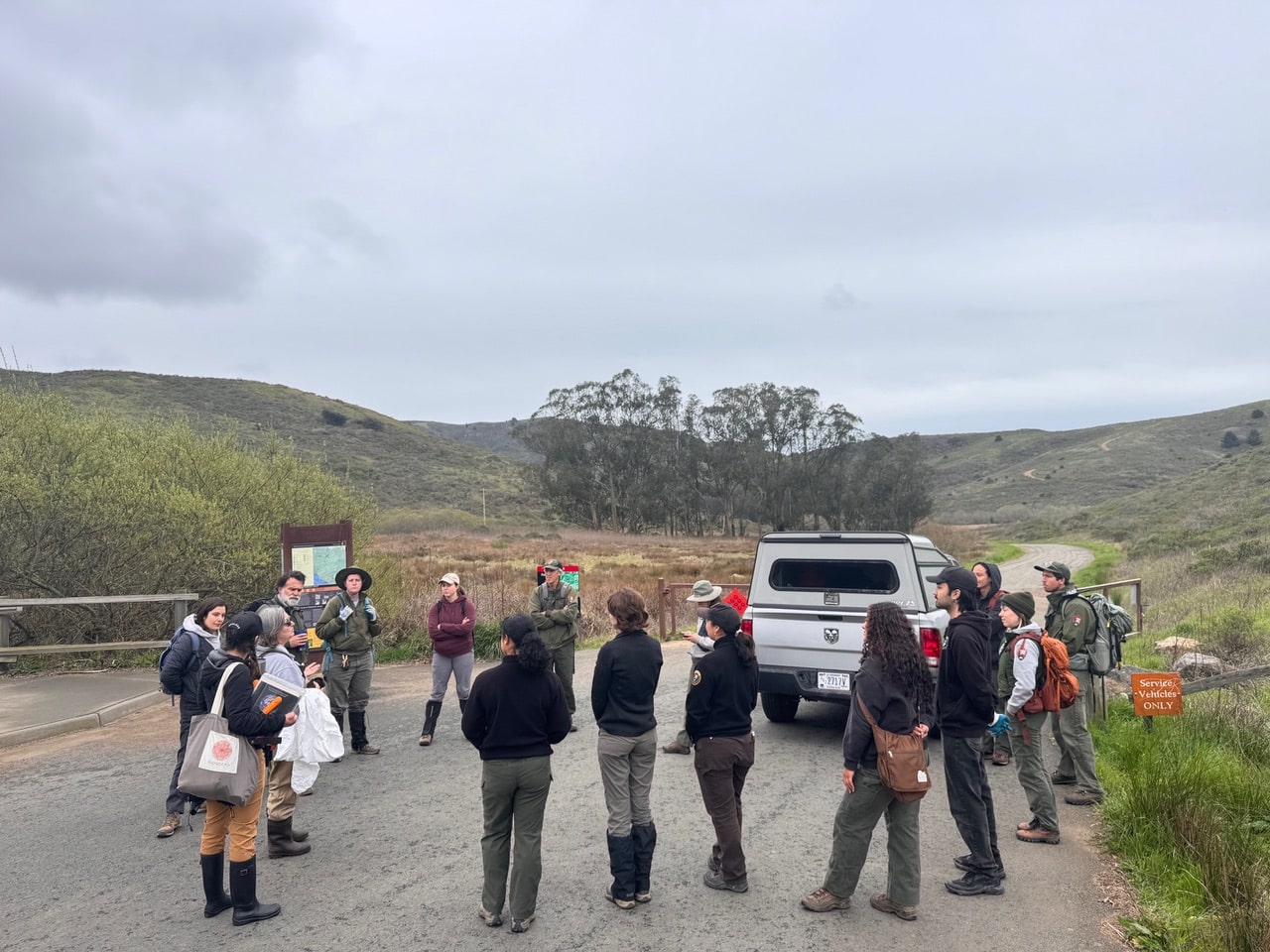In March of 2025, WATER Institute Co-Directors Brock Dolman and Kate Lundquist had the great pleasure of meeting with Golden Gate National Recreation Area (GGNRA) staff to carry out a daylong training on park lands in the Tennessee Valley (Marin County). The staff were interested in learning about process-based restoration and being instructed by Brock and Kate on how to site, design and carry out gully-stuffing using onsite materials and hand tools.
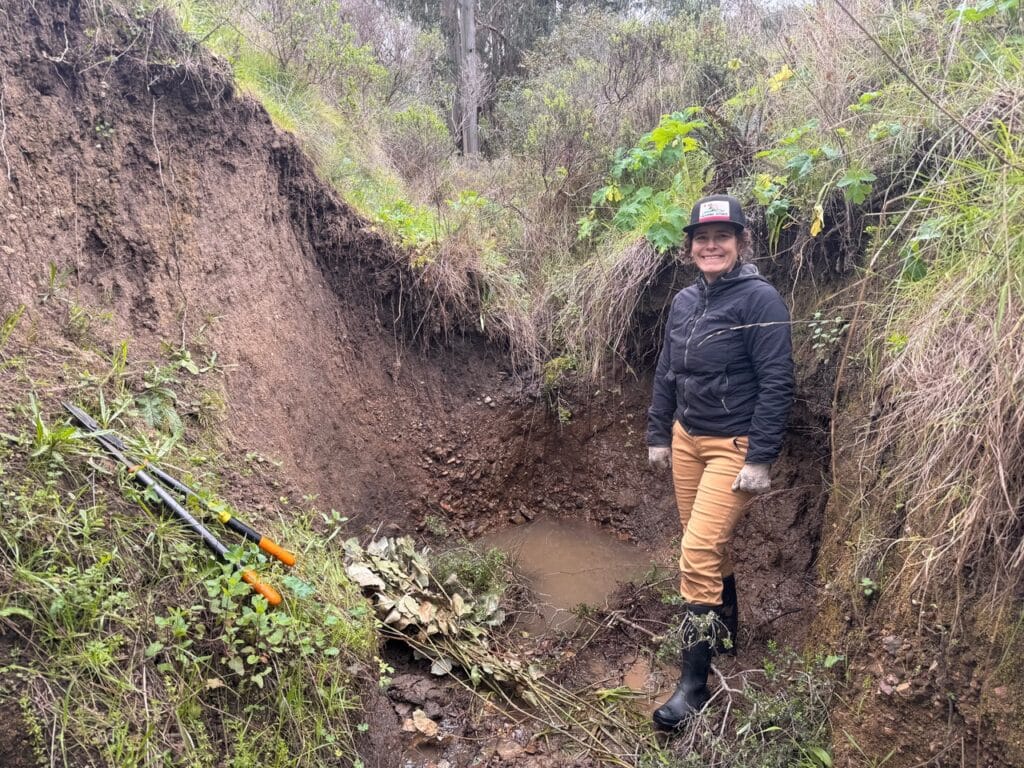
We were excited for the opportunity to share ideas with, learn from and work alongside our GGNRA partners including host Laura Booth (Biologist for Tennessee Valley), Darren Fong (Aquatic Ecologist), Carolyn Shoulders (Restoration Projects Manager), and Erik Grijalva (Supervisory Vegetation Ecologist) as well as field staff of the Vegetation Team (Brett Stormoen, Katherine Stratton, Catherine LaPerche), Elena Wolff (Grasslands Restoration Coordinator hired through the Great Basin Institute), and interns who work with GGNRA via one of their park partners.
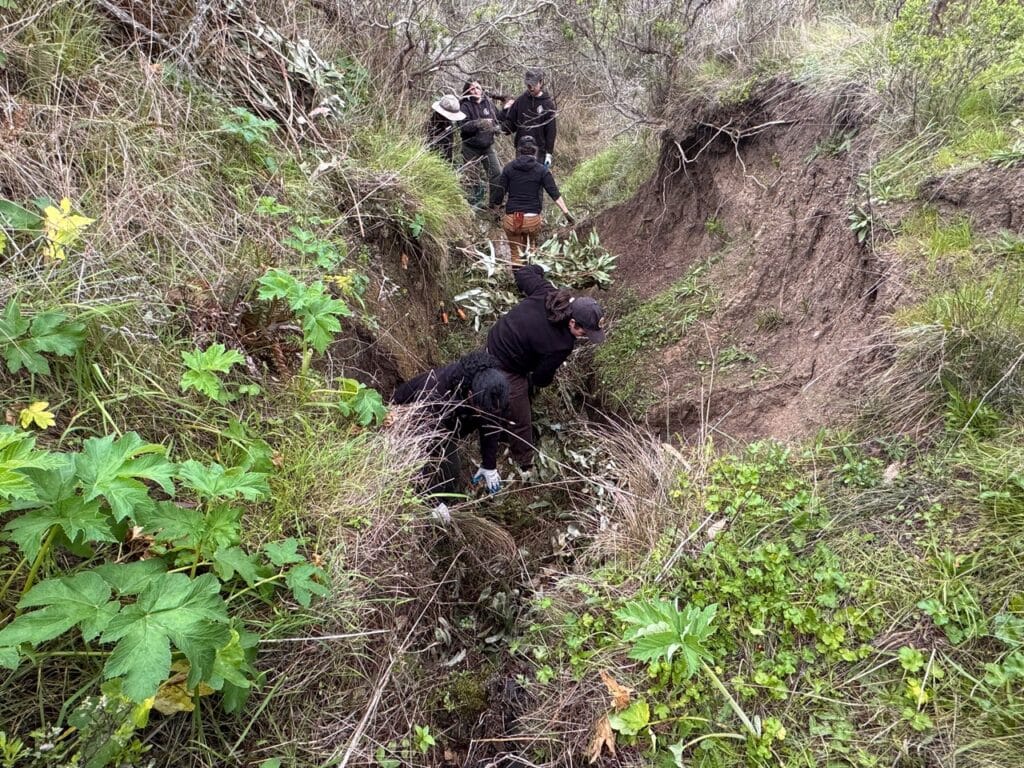
In advance of the training, we proposed to have the field day focus on what we call a “Fuels to Flows” approach. Given the park’s abundance of non-native fuels needing thinning and/or removal, and the prevalence of ever-eroding gullies, we suggested we use the biomass produced from thinning to strategically stuff those gullies. Park staff agreed, identified a gully they were interested in treating and a couple of days in advance prepared materials that came from a nearby removal of a non-native eucalyptus. The gully they selected showed signs of an active head-cut that was being exacerbated by recent rains. We processed and used all parts of the thinned eucalyptus and supplemented those materials with nearby native plants that were in great abundance and could benefit from some thinning as well.
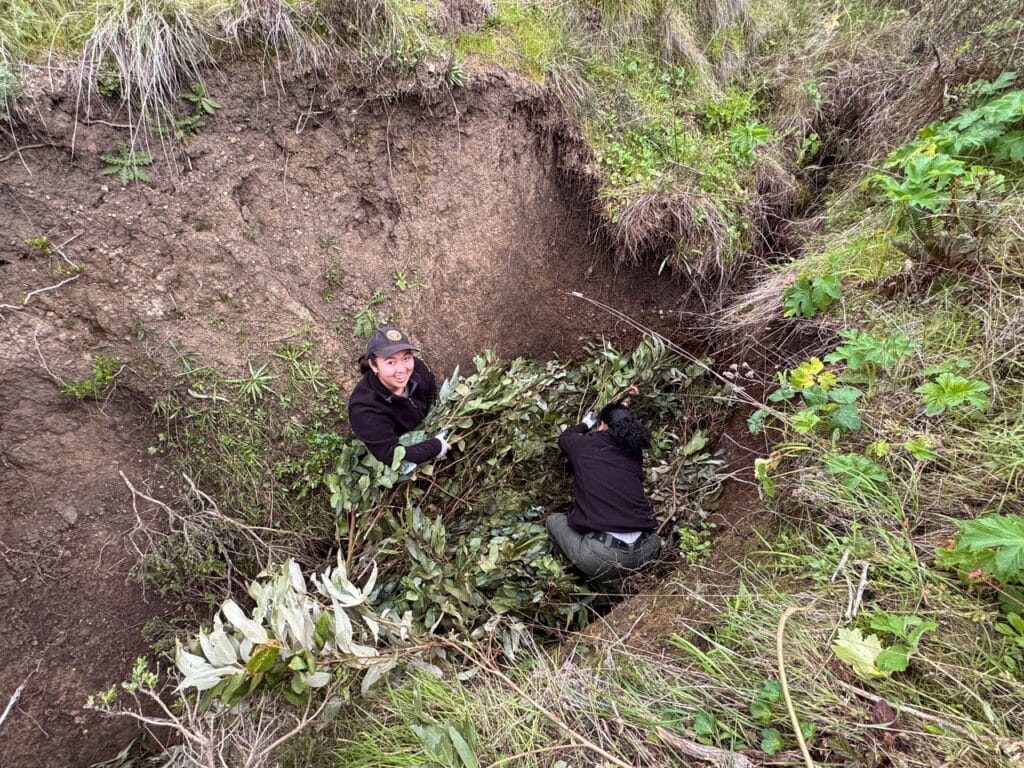
Now complete, the gully will be much more resilient to run-off. It will trap sediment and thus improve water quality. As the biomass settles and composts, it will become a sponge that will retain water longer into the dry season. This in turn will provide greater habitat for plants and wildlife.
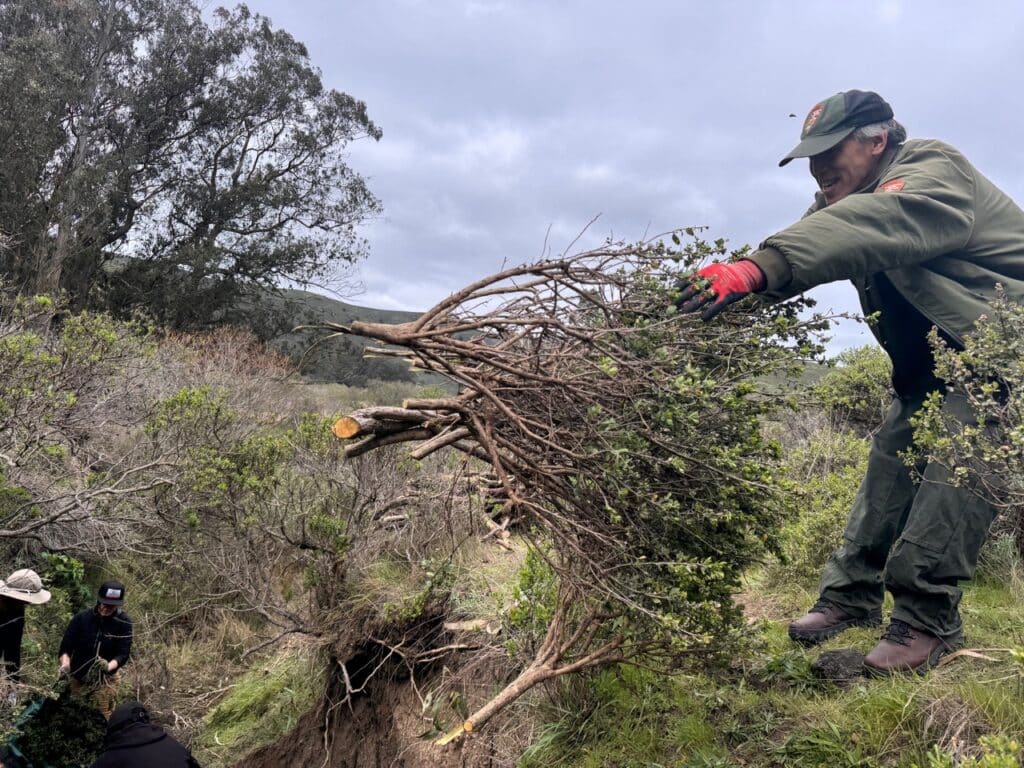
Given the challenges our federal partners are facing with major budget and staff cuts, it was gratifying to be able to be in the field together and see first-hand the benefits these strategies provide. We are happy to report that the treatment is working well. Since the installation, rains have come and the water below the structures is free of sediment and running clear!

Photos by Brock Dolman
